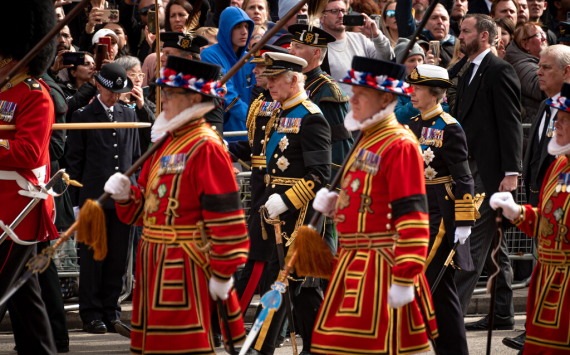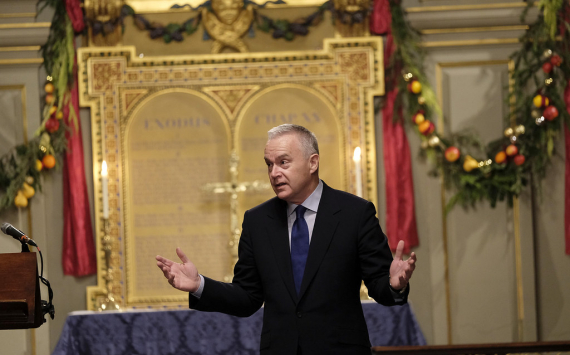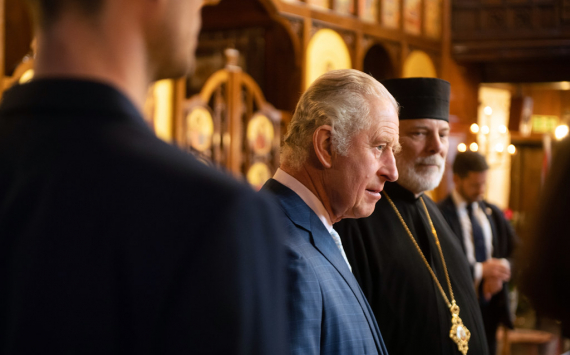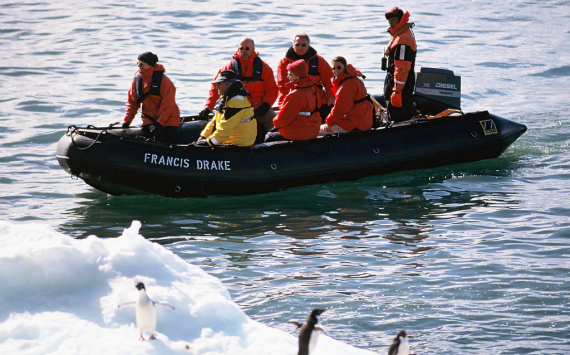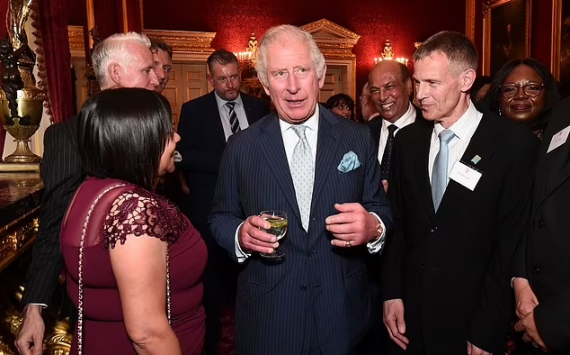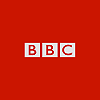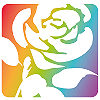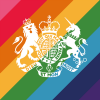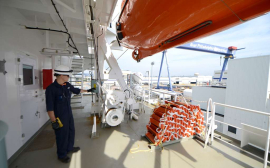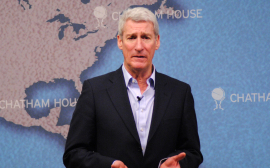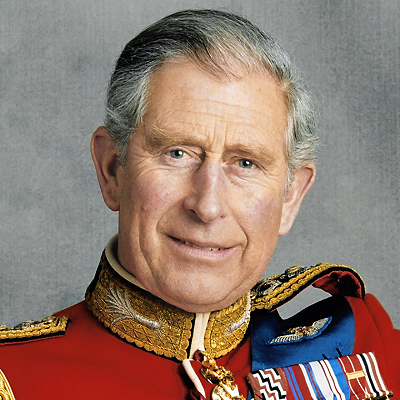
KING
III
Charles
(Charles
Philip
Arthur
George)
King
Date of Birth: 14 November 1948
Age: 76 years old
Place of Birth: Buckingham Palace, London, England
Zodiac sign: Scorpio
Profession: King
Biography
King III Charles (Charles Philip Arthur George is King of the United Kingdom and the 14 other Commonwealth realms.[d] He was the longest-serving heir apparent and Prince of Wales and, at age 73, became the oldest person to accede to the British throne, upon the death of his mother, Elizabeth II, on 8 September 2022.
Charles was born in Buckingham Palace during the reign of his maternal grandfather, King George VI, and was three when his mother ascended the throne in 1952, making him the heir apparent. He was made Prince of Wales in 1958 and his investiture was held in 1969. He was educated at Cheam and Gordonstoun schools, as was his father, Prince Philip, Duke of Edinburgh. Charles later spent six months at the Timbertop campus of Geelong Grammar School in Victoria, Australia. After earning a Bachelor of Arts degree from the University of Cambridge, Charles served in the Air Force and Navy from 1971 to 1976. In 1981, he married Lady Diana Spencer, with whom he had two sons, William and Harry. In 1996, the couple divorced after they had each engaged in well-publicised extramarital affairs. Diana died in a car crash the following year. In 2005, Charles married his long-time partner, Camilla Parker Bowles.
As Prince of Wales, Charles undertook official duties and engagements on behalf of the Queen. He founded the youth charity the Prince's Trust in 1976, sponsors the Prince's Charities, and is a patron, president, or a member of over 400 other charities and organisations. He has advocated for the conservation of historic buildings and the importance of architecture in society.[2] A critic of modernist architecture, Charles worked on the creation of Poundbury, an experimental new town based on his architectural tastes. He is also an author or co-author of over 20 books. An environmentalist, Charles supported organic farming and action to prevent climate change during his time as the manager of the Duchy of Cornwall estates, earning him awards and recognition from environmental groups;[3] he is also a prominent critic of the adoption of genetically modified food, while his support for homeopathy and other alternative medicine has been criticised.
Charles's coronation is scheduled to take place on 6 May 2023.
Early life, family and education
Charles was born in Buckingham Palace on 14 November 1948, during the reign of his maternal grandfather George VI, as the first child of Princess Elizabeth, Duchess of Edinburgh, and Philip, Duke of Edinburgh.[14] He was baptised there by the Archbishop of Canterbury, Geoffrey Fisher, on 15 December 1948.[fn 3] The death of his grandfather and the accession of his mother as Queen Elizabeth II in 1952 made Charles the heir apparent. As the monarch's eldest son, he automatically assumed the titles Duke of Cornwall, Duke of Rothesay, Earl of Carrick, Baron of Renfrew, Lord of the Isles, and Prince and Great Steward of Scotland.[16] Charles attended his mother's coronation at Westminster Abbey on 2 June 1953.[17]
As was customary for upper-class children at the time, a governess, Catherine Peebles, was appointed and undertook his education between the ages of five and eight. Buckingham Palace announced in 1955 that Charles would attend school rather than have a private tutor, making him the first heir apparent to be educated in that manner.[18] On 7 November 1956, Charles commenced classes at Hill House School in west London.[19] He did not receive preferential treatment from the school's founder and headmaster, Stuart Townend, who advised the Queen to have Charles train in football because the boys were never deferential to anyone on the football field.[20] Charles then attended two of his father's former schools, Cheam Preparatory School in Berkshire, England,[21] from 1958,[19] followed by Gordonstoun in the north-east of Scotland,[22] beginning classes there in April 1962.[19]
In his 1994 authorised biography by Jonathan Dimbleby, Elizabeth and Philip were described as physically and emotionally distant parents, with Philip being blamed for his disregard of Charles's sensitive nature and forcing him to attend Gordonstoun, where he was bullied.[23] Though Charles reportedly described Gordonstoun, noted for its especially rigorous curriculum, as "Colditz in kilts",[21] he subsequently praised Gordonstoun, stating it had taught him "a great deal about myself and my own abilities and disabilities. It taught me to accept challenges and take the initiative." In a 1975 interview, he said he was "glad" he had attended Gordonstoun and that the "toughness of the place" was "much exaggerated".[24] He spent two terms in 1966 at the Timbertop campus of Geelong Grammar School in Victoria, Australia, during which time he visited Papua New Guinea on a school trip with his history tutor, Michael Collins Persse.[25][26][27] In 1973, Charles described his time at Timbertop as the most enjoyable part of his whole education.[28] Upon his return to Gordonstoun, Charles emulated his father in becoming Head Boy. He left in 1967, with six GCE O-levels and two A-levels in history and French, at grades B and C respectively.[25][29] On his early education, Charles later remarked, "I didn't enjoy school as much as I might have, but that was only because I'm happier at home than anywhere else."[24]
Charles broke royal tradition a second time when he proceeded straight to university after his A-levels, rather than joining the British Armed Forces.[21] In October 1967, he was admitted to Trinity College, Cambridge, where he read archaeology and anthropology for the first part of the Tripos, and then changed to history for the second part.[30][31][25] During his second year, Charles attended the University College of Wales in Aberystwyth, studying Welsh history and language for a term.[25] He graduated from the University of Cambridge with a 2:2 Bachelor of Arts (BA) degree on 23 June 1970, the first British heir apparent to earn a university degree.[25] On 2 August 1975, he was awarded a Master of Arts (MA Cantab) degree by Cambridge. At Cambridge, Master of Arts is an academic rank, not a postgraduate degree.[25]
Prince of Wales
Charles was created Prince of Wales and Earl of Chester on 26 July 1958,[32][33] though his investiture was not held until 1 July 1969, when he was crowned by his mother in a televised ceremony held at Caernarfon Castle.[34] He took his seat in the House of Lords in 1970,[35][36] and he made his maiden speech in June 1974,[37] the first royal to speak from the floor since the future Edward VII in 1884.[38] He spoke again in 1975.[39] Charles began to take on more public duties, founding The Prince's Trust in 1976,[40] and travelling to the United States in 1981.[41] In the mid-1970s, the prince expressed an interest in serving as Governor-General of Australia, at the suggestion of Australian prime minister Malcolm Fraser, but because of a lack of public enthusiasm nothing came of the proposal.[42] Charles commented: "So, what are you supposed to think when you are prepared to do something to help and you are just told you're not wanted?"[43]
Military training and career
Charles served in the Royal Air Force and, following in the footsteps of his father, grandfather and two of his great-grandfathers, in the Royal Navy. During his second year at Cambridge, he requested and received Royal Air Force training. On 8 March 1971, he flew himself to the Royal Air Force College Cranwell to train as a jet pilot.[44] After the passing-out parade that September, he embarked on a naval career and enrolled in a six-week course at the Royal Naval College Dartmouth. He then served on the guided-missile destroyer HMS Norfolk (1971–1972) and the frigates HMS Minerva (1972–1973) and HMS Jupiter (1974). In 1974, he qualified as a helicopter pilot at RNAS Yeovilton, and then joined 845 Naval Air Squadron, operating from HMS Hermes.[45]
On 9 February 1976, Charles took command of the coastal minehunter HMS Bronington for his last ten months of active service in the navy.[45] He learned to fly on a Chipmunk basic pilot trainer, a BAC Jet Provost jet trainer, and a Beagle Basset multi-engine trainer; he then regularly flew the Hawker Siddeley Andover, Westland Wessex and BAe 146 aircraft of The Queen's Flight[46] until he gave up flying after crash landing the BAe 146 in the Hebrides in 1994, for which he was found negligent by a board of inquiry.[47][48]
Official duties
In 2008, The Daily Telegraph described Charles as the "hardest-working member of the royal family."[49] He carried out 560 official engagements in 2008,[49] 499 in 2010,[50] and over 600 in 2011.
As Prince of Wales, Charles undertakes official duties on behalf of the Queen. He officiates at investitures and attends the funerals of foreign dignitaries.[51] Prince Charles makes regular tours of Wales, fulfilling a week of engagements each summer, and attending important national occasions, such as opening the Senedd.[52] The six trustees of the Royal Collection Trust meet three times a year under his chairmanship.[53] Prince Charles travels abroad on behalf of the United Kingdom. Charles has been regarded as an effective advocate of the country.
In 1983, Christopher John Lewis, who had fired a shot with a .22 rifle at the Queen in 1981, attempted to escape a psychiatric hospital in order to assassinate Charles, who was visiting New Zealand with Diana and William.[54] While Charles was visiting Australia on Australia Day in January 1994, David Kang fired two shots at him from a starting pistol in protest of the treatment of several hundred Cambodian asylum seekers held in detention camps.[55][56] In 1995, Charles became the first member of the royal family to visit the Republic of Ireland in an official capacity.[57][58]
In 2000, Charles revived the tradition of the Prince of Wales having an official harpist, in order to foster Welsh talent at playing the harp, the national instrument of Wales. He and the Duchess of Cornwall also spend one week each year in Scotland, where he is patron of several Scottish organisations.[59] His service to the Canadian Armed Forces permits him to be informed of troop activities, and allows him to visit these troops while in Canada or overseas, taking part in ceremonial occasions.[60] For instance, in 2001 he placed a specially commissioned wreath, made from vegetation taken from French battlefields, at the Canadian Tomb of the Unknown Soldier,[61] and in 1981 he became the patron of the Canadian Warplane Heritage Museum.[62] At the funeral of Pope John Paul II in 2005, Charles unintentionally caused controversy when he shook hands with Robert Mugabe, the President of Zimbabwe, who had been seated next to him. Charles's office subsequently released a statement saying: "The Prince of Wales was caught by surprise and not in a position to avoid shaking Mr Mugabe's hand. The Prince finds the current Zimbabwean regime abhorrent. He has supported the Zimbabwe Defence and Aid Fund, which works with those being oppressed by the regime. The Prince also recently met Pius Ncube, the Archbishop of Bulawayo, an outspoken critic of the government."[63] In November 2001, Charles was struck in the face with three red carnations by teenager Alina Lebedeva, whilst he was on an official visit to Latvia.[64]
In 2010, Charles represented the Queen at the opening ceremony of the 2010 Commonwealth Games in Delhi, India.[65] He attends official events in the United Kingdom in support of Commonwealth countries, such as the Christchurch earthquake memorial service at Westminster Abbey in 2011.[66][67][68] From 15 to 17 November 2013, he represented the Queen for the first time at a Commonwealth Heads of Government Meeting, in Colombo, Sri Lanka.[69][70]
In 2013, Charles donated an unspecified sum of money to the British Red Cross Syria Crisis appeal and DEC Syria appeal, which is run by 14 British charities to help victims of the Syrian civil war.[71][72] According to The Guardian, it is believed that after turning 65 years old in 2013, Charles donated his state pension to an unnamed charity that supports elderly people.[73] In March 2014, Charles arranged for five million measles-rubella vaccinations for children in the Philippines on the outbreak of measles in South-East Asia. According to Clarence House, Charles was affected by news of the damage caused by Typhoon Yolanda in 2013. International Health Partners, of which he has been Patron since 2004, sent the vaccines, which are believed to protect five million children below the age of five from measles.[74][75]
Letters sent by Prince Charles to government ministers during 2004 and 2005 – the so-called black spider memos – presented potential embarrassment following a challenge by The Guardian newspaper to release the letters under the Freedom of Information Act 2000. In March 2015, the Supreme Court of the United Kingdom decided that the Prince's letters must be released.[76] The letters were published by the Cabinet Office on 13 May 2015.[77][78][79] Reaction to the memos upon their release was largely supportive of Charles, with little criticism of him.[80] The memos were variously described in the press as "underwhelming"[81] and "harmless"[82] and that their release had "backfired on those who seek to belittle him",[83] with reaction from the public also supportive.[84]
The Prince of Wales and the Duchess of Cornwall made their first joint trip to the Republic of Ireland in May 2015. The trip was called an important step in "promoting peace and reconciliation" by the British Embassy.[85] During the trip, Charles shook hands with Sinn Féin and supposed IRA leader Gerry Adams in Galway, which was described by the media as a "historic handshake" and a "significant moment for Anglo-Irish relations".[86][87][88] In the run up to the Prince's visit, two Irish republican dissidents were arrested for planning a bomb attack. Semtex and rockets were found at the Dublin home of suspect Donal Ó Coisdealbha, member of a self-styled Óglaigh na hÉireann organisation, who was later jailed for five and a half years.[89] He was connected to a veteran republican, Seamus McGrane of County Louth, a member of the Real IRA, who was jailed for 11 and a half years.[90][91] In 2015, it was revealed that Prince Charles had access to confidential UK cabinet papers.[92]
Charles has made frequent visits to Saudi Arabia in order to promote arms exports for companies such as BAE Systems. In 2013,[93] 2014,[94] and 2015,[95] he met with the commander of Saudi Arabia's National Guard Mutaib bin Abdullah. In February 2014, he took part in a traditional sword dance with members of the Saudi royal family at the Janariyah festival in Riyadh.[96] At the same festival, British arms company BAE Systems was honoured by Prince Salman bin Abdulaziz.[97] Charles was criticised by Scottish MP Margaret Ferrier in 2016 over his role in the sale of Typhoon fighter jets to Saudi Arabia.[98] According to Charles's biographer Catherine Mayer, a Time magazine journalist who claims to have interviewed several sources from Prince Charles's inner circle, he "doesn't like being used to market weaponry" in deals with Saudi Arabia and other Arab Gulf states. According to Mayer, Charles has only raised his objections to being used to sell weapons abroad in private.[99] Commonwealth heads of government decided at their 2018 meeting that the Prince of Wales will be the next Head of the Commonwealth after the Queen. The head is chosen and therefore not hereditary.[100]
On 7 March 2019, the Queen hosted a Buckingham Palace event to mark the 50th anniversary of Charles's investiture as the Prince of Wales. Guests at the event included the Duchess of Cornwall, the Duke and Duchess of Cambridge, the Duke and Duchess of Sussex, Prime Minister Theresa May and Welsh First Minister Mark Drakeford.[101] The same month, at the request of the British government, the Prince of Wales and the Duchess of Cornwall went on an official tour to Cuba, making them the first British royalty to visit the country. The tour was seen as effort to form a closer relationship between the UK and Cuba.[102]
In January 2020, the Prince of Wales became the first British patron of the International Rescue Committee, a charity which aims to help refugees and those displaced by war, persecution, or natural disaster.[103] In April 2021 and following a surge in COVID-19 cases in India, Charles issued a statement, announcing the launch of an emergency appeal for India by the British Asian Trust, of which he is the founder. The appeal, called Oxygen for India, helped with buying oxygen concentrators for hospitals in need.[104]
On 25 March 2020, it was announced that Charles had contracted COVID-19 during the pandemic. He and his wife subsequently isolated at their Birkhall residence. Camilla was also tested, but returned a negative result.[105][106][107] Clarence House stated that he showed "mild symptoms" but "remains in good health". They further explained, "It is not possible to ascertain from whom the prince caught the virus owing to the high number of engagements he carried out in his public role during recent weeks."[106] Several newspapers were critical that Charles and Camilla were tested promptly at a time when many NHS doctors, nurses and patients had been unable to be tested expeditiously.[108][109] On 30 March 2020, Clarence House announced that Charles had recovered from the virus, and that, after consulting his doctor, he was no longer isolating.[110][111] Two days later, he stated in a video that he would continue to practice social distancing.[112]
In October 2020, a letter sent by Prince Charles to Governor-General Sir John Kerr after the 1975 dismissal from office of the Australian Prime Minister Gough Whitlam was released as a part of the collection of palace letters regarding the 1975 Australian constitutional crisis.[113] In the letter, Charles appeared to be supportive of Kerr's decision, writing that what Kerr "did last year was right and the courageous thing to do – and most Australians seemed to endorse your decision when it came to the point," adding that he should not worry about "demonstrations and stupidities" that arose following his decision.[113]
In November 2021, Charles attended the ceremonies held to mark Barbados's transition into a parliamentary republic, which removed the Queen as Barbadian head of state.[114] The Prince was invited by Prime Minister Mia Mottley as the future head of the Commonwealth,[115] and it was the first time that a member of the royal family attend the transition of a realm to a republic.[116]
On 10 February 2022, it was announced that Charles had tested positive for COVID-19 for a second time and was self-isolating.[117] His wife later also confirmed contracting the virus, followed by the Queen herself 10 days after Charles's second diagnosis.[118] Charles and his wife received doses of a COVID-19 vaccine in February 2021.[119]
Philanthropy and charity
Since founding The Prince's Trust in 1976, Charles has established 16 more charitable organisations, and now serves as president of all of those.[120] Together, these form a loose alliance called The Prince's Charities, which describes itself as "the largest multi-cause charitable enterprise in the United Kingdom, raising over £100 million annually ... [and is] active across a broad range of areas including education and young people, environmental sustainability, the built environment, responsible business and enterprise and international."[120]
In 2010, The Prince's Charities Canada was established in a similar fashion to its namesake in the UK.[121] Charles is also patron of over 400 other charities and organisations.[122] He uses his tours of Canada as a way to help draw attention to youth, the disabled, the environment, the arts, medicine, the elderly, heritage conservation, and education.[123] In Canada, Charles has supported humanitarian projects. Along with his two sons, he took part in ceremonies that marked the 1998 International Day for the Elimination of Racial Discrimination.[123] Charles has also set up The Prince's Charities Australia, which is based in Melbourne, Victoria. The Prince's Charities Australia is to provide a coordinating presence for the Prince of Wales's Australian and international charitable endeavours[124]
Charles was one of the first world leaders to express strong concerns about the human rights record of Romanian dictator Nicolae Ceaușescu, initiating objections in the international arena,[125] and subsequently supported the FARA Foundation,[122] a charity for Romanian orphans and abandoned children.[126]
Built environment
The Prince of Wales has openly expressed his views on architecture and urban planning; he fostered the advancement of New Classical Architecture and asserted that he "care[s] deeply about issues such as the environment, architecture, inner-city renewal, and the quality of life."[127][128] In a speech given for the 150th anniversary of the Royal Institute of British Architects (RIBA) on 30 May 1984, he memorably described a proposed extension to the National Gallery in London as a "monstrous carbuncle on the face of a much-loved friend" and deplored the "glass stumps and concrete towers" of modern architecture.[129] He asserted that "it is possible, and important in human terms, to respect old buildings, street plans and traditional scales and at the same time not to feel guilty about a preference for facades, ornaments and soft materials,"[129] called for local community involvement in architectural choices, and asked:
Why can't we have those curves and arches that express feeling in design? What is wrong with them? Why has everything got to be vertical, straight, unbending, only at right angles – and functional?[129]
His book and BBC documentary A Vision of Britain (1987) was also critical of modern architecture, and he has continued to campaign for traditional urbanism, human scale, restoration of historic buildings, and sustainable design,[130] despite criticism in the press. Two of his charities (The Prince's Regeneration Trust and The Prince's Foundation for Building Community, which were later merged into one charity) promote his views, and the village of Poundbury was built on land owned by the Duchy of Cornwall to a master plan by Léon Krier under the guidance of Prince Charles and in line with his philosophy.[127]
Charles helped establish a national trust for the built environment in Canada after lamenting, in 1996, the unbridled destruction of many of the country's historic urban cores. He offered his assistance to the Department of Canadian Heritage in creating a trust modelled on Britain's National Trust, a plan that was implemented with the passage of the 2007 Canadian federal budget.[131] In 1999, the Prince agreed to the use of his title for the Prince of Wales Prize for Municipal Heritage Leadership, awarded by the Heritage Canada Foundation to municipal governments that have shown sustained commitment to the conservation of historic places.[132] While visiting the United States and surveying the damage caused by Hurricane Katrina, Charles received the National Building Museum's Vincent Scully Prize in 2005, for his efforts in regard to architecture; he donated $25,000 of the prize money towards restoring storm-damaged communities.[133][134]
From 1997, the Prince of Wales has visited Romania to view and highlight the destruction of Orthodox monasteries and Transylvanian Saxon villages during the Communist rule of Nicolae Ceaușescu.[135][136][137] Charles is patron of the Mihai Eminescu Trust, a Romanian conservation and regeneration organisation,[138] and has purchased a house in Romania.[139] Historian Tom Gallagher wrote in the Romanian newspaper România Liberă in 2006 that Charles had been offered the Romanian throne by monarchists in that country; an offer that was reportedly turned down,[140] but Buckingham Palace denied the reports.[141] Charles also has "a deep understanding of Islamic art and architecture", and has been involved in the construction of a building and garden at the Oxford Centre for Islamic Studies that combine Islamic and Oxford architectural styles.[142]
Charles has occasionally intervened in projects that employ architectural styles such as modernism and functionalism.[143][144][145] In 2009, Charles wrote to the Qatari royal family, the developers of the Chelsea Barracks site, labelling Lord Rogers's design for the site "unsuitable". Subsequently, Rogers was removed from the project and The Prince's Foundation for the Built Environment was appointed to propose an alternative.[146] Rogers claimed the Prince had also intervened to block his designs for the Royal Opera House and Paternoster Square, and condemned Charles's actions as "an abuse of power" and "unconstitutional".[146] Lord Foster, Zaha Hadid, Jacques Herzog, Jean Nouvel, Renzo Piano, and Frank Gehry, among others, wrote a letter to The Sunday Times complaining that the Prince's "private comments" and "behind-the-scenes lobbying" subverted the "open and democratic planning process".[147] Piers Gough and other architects condemned Charles's views as "elitist" in a letter encouraging colleagues to boycott a speech given by Charles to RIBA in 2009.[143][145]
In 2010, The Prince's Foundation for the Built Environment decided to help reconstruct and redesign buildings in Port-au-Prince, Haiti after the capital was destroyed by the 2010 Haiti earthquake.[148] The foundation is known for refurbishing historic buildings in Kabul, Afghanistan and in Kingston, Jamaica. The project has been called the "biggest challenge yet" for the Prince's Foundation for the Built Environment.[149] For his work as patron of New Classical Architecture, in 2012 he was awarded the Driehaus Architecture Prize for patronage. The prize, awarded by the University of Notre Dame, is considered the highest architecture award for New Classical Architecture and urban planning.[150]
Livery company commitments
The Worshipful Company of Carpenters installed Charles as an Honorary Liveryman "in recognition of his interest in London's architecture."[151] The Prince of Wales is also Permanent Master of the Worshipful Company of Shipwrights, a Freeman of the Worshipful Company of Drapers, an Honorary Freeman of the Worshipful Company of Musicians, an Honorary Member of the Court of Assistants of the Worshipful Company of Goldsmiths, and a Royal Liveryman of the Worshipful Company of Gardeners.[152]
Natural environment
The Prince of Wales and the Duchess of Cornwall meeting Federal Emergency Management Agency officials in Louisiana, as they arrive to tour the damage created by Hurricane Katrina, November 2005
Since the 1970s, Charles has promoted environmental awareness.[153] In order to decrease his carbon footprint, he has used biomass boilers for heating Birkhall, where he has also installed a hydroelectric turbine in the river beside the estate. He has utilised solar panels at Clarence House and Highgrove, and – besides using electric cars on his estates – runs his Aston Martin DB6 on E85.[154]
Upon moving into Highgrove House, Charles developed an interest in organic farming, which culminated in the 1990 launch of his own organic brand, Duchy Originals,[155] which now sells more than 200 different sustainably produced products, from food to garden furniture; the profits (over £6 million by 2010) are donated to The Prince's Charities.[155][156] Documenting work on his estate, Charles co-authored (with Charles Clover, environment editor of The Daily Telegraph) Highgrove: An Experiment in Organic Gardening and Farming, published in 1993, and offers his patronage to Garden Organic. Along similar lines, the Prince of Wales became involved with farming and various industries within it, regularly meeting with farmers to discuss their trade. Although the 2001 foot-and-mouth epidemic in England prevented Charles from visiting organic farms in Saskatchewan, he met the farmers at Assiniboia town hall.[157][158] In 2004, he founded the Mutton Renaissance Campaign, which aims to support British sheep farmers and make mutton more attractive to Britons.[159] His organic farming has attracted media criticism: According to The Independent in October 2006, "the story of Duchy Originals has involved compromises and ethical blips, wedded to a determined merchandising programme."[160]
In 2007, he received the 10th annual Global Environmental Citizen Award from the Harvard Medical School's Center for Health and the Global Environment, the director of which, Eric Chivian, stated: "For decades the Prince of Wales has been a champion of the natural world ... He has been a world leader in efforts to improve energy efficiency and in reducing the discharge of toxic substances on land, and into the air and the oceans".[161] Charles's travels by private jet drew criticism from Plane Stupid's Joss Garman.[162][163] In 2007, Charles launched The Prince's May Day Network, which encourages businesses to take action on climate change. Speaking to the European Parliament on 14 February 2008, he called for European Union leadership in the war against climate change. During the standing ovation that followed, Nigel Farage, the leader of the United Kingdom Independence Party (UKIP), remained seated and went on to describe Charles's advisers as "naive and foolish at best."[164] In a speech to the Low Carbon Prosperity Summit in a European Parliament chamber on 9 February 2011, Charles said that climate change sceptics are playing "a reckless game of roulette" with the planet's future and are having a "corrosive effect" on public opinion. He also articulated the need to protect fisheries and the Amazon rain forest, and to make low-carbon emissions affordable and competitive.[165] In 2011, Charles received the Royal Society for the Protection of Birds Medal for his engagement with the environment, such as the conservation of rainforests.[166]
On 27 August 2012, the Prince of Wales addressed the International Union for Conservation of Nature – World Conservation Congress, supporting the view that grazing animals are needed to keep soils and grassland productive:
I have been particularly fascinated, for example, by the work of a remarkable man called Allan Savory, in Zimbabwe and other semi arid areas, who has argued for years against the prevailing expert view that is the simple numbers of cattle that drive overgrazing and cause fertile land to become desert. On the contrary, as he has since shown so graphically, the land needs the presence of feeding animals and their droppings for the cycle to be complete, so that soils and grassland areas stay productive. Such that, if you take grazers off the land and lock them away in vast feedlots, the land dies.[167]
In February 2014, Charles visited the Somerset levels to meet residents affected by winter flooding. During his visit, Charles remarked that "There's nothing like a jolly good disaster to get people to start doing something. The tragedy is that nothing happened for so long." He pledged a £50,000 donation, provided by the Prince's Countryside Fund, to help families and businesses.[168][169][170] In December 2015, Charles delivered a speech at the opening ceremony for COP21, making a plea to industries to put an end to practices that cause deforestation.[171] In August 2019, it was announced that the Prince of Wales had collaborated with British fashion designers Vin and Omi to produce a line of clothing made out of nettles found in his Highgrove estate. Nettles are a type of plants which are usually "perceived to have no value". The Highgrove plant waste was also used to create the jewellery worn with the dresses.[172] In September 2020, the Prince of Wales launched RE:TV, an online platform featuring short films and articles on issues such as climate change and sustainability. He serves as the platform's editor-in-chief.[173] The platform later partnered with Amazon Prime Video and WaterBear, another streaming platform dedicated to environmental issues.[174] In the same month, he stated in a speech that a military-style response similar to the Marshall Plan was required to combat climate change.[175]
In January 2020, Chares launched the Sustainable Markets Initiative at the World Economic Forum's annual meeting in Davos, a project which encourages putting sustainability at the centre of all activities.[176] In May 2020, the Prince of Wales's Sustainable Markets Initiative and the World Economic Forum launched the Great Reset project, a five-point plan concerned with enhancing sustainable economic growth following the global recession caused by the COVID-19 pandemic.[177] In January 2021, Charles launched Terra Carta ("Earth Charter"), a sustainable finance charter that would ask its signatories to follow a set of rules towards becoming more sustainable and make investments in projects and causes that help with preserving the environment.[178][179] In July 2021, Charles and Jony Ive announced the Terra Carta Design Lab, a competition conceived by the Royal College of Art to find solutions to climate change and environmental issues, winners of which would be supported financially and introduced to the industry leads of the Sustainable Markets Initiative.[180][181] In September 2021, he launched the Food for the Future initiative, a programme with contributions from Jimmy Doherty and Jamie Oliver which aims to educate secondary school children about the food system and eliminating food waste.[182] In his role as patron of the National Hedgelaying Society, Charles has hosted receptions for the organisation's rural competition at his Highgrove estate to assist with preserving hedgerows planted in the UK.[183]
In June 2021, he attended a reception hosted by the Queen during the 47th G7 summit, and a meeting beween G7 leaders and sustainable industry CEOs to discuss governmental and corporate solutions to environmental problems.[184] In October 2021, he delivered a speech at the 2021 G20 Rome summit, describing COP26 as "the last chance saloon" for preventing climate change and asking for actions that would lead to a green-led sustainable economy.[185] In his speech at the opening ceremony for COP26, he repeated his sentiments from the previous year, stating that "a vast military-style campaign" was needed "to marshal the strength of the global private sector" for tackling climate change.[186] In 2021, Prince Charles spoke to the BBC about the environment and said two days a week he eats no meat nor fish and one day a week he eats no dairy products.[187][188]
Charles, who is patron of the Cambridge Institute for Sustainability Leadership, launched the Climate Action Scholarships for students from small island nations in partnership with University of Cambridge, University of Toronto, University of Melbourne, McMaster University and University of Montreal in March 2022.[189]
Alternative medicine
Charles has controversially championed alternative medicine.[190] The Prince's Foundation for Integrated Health attracted opposition from the scientific and medical community over its campaign encouraging general practitioners to offer herbal and other alternative treatments to National Health Service patients,[191][192] and in May 2006, Charles made a speech at the World Health Assembly in Geneva, urging the integration of conventional and alternative medicine and arguing for homeopathy.[193][9]
In April 2008, The Times published a letter from Edzard Ernst, Professor of Complementary Medicine at the University of Exeter, which asked the Prince's Foundation to recall two guides promoting alternative medicine, saying "the majority of alternative therapies appear to be clinically ineffective, and many are downright dangerous." A speaker for the foundation countered the criticism by stating: "We entirely reject the accusation that our online publication Complementary Healthcare: A Guide contains any misleading or inaccurate claims about the benefits of complementary therapies. On the contrary, it treats people as adults and takes a responsible approach by encouraging people to look at reliable sources of information ... so that they can make informed decisions. The foundation does not promote complementary therapies."[194] That year, Ernst published a book with Simon Singh, mockingly dedicated to "HRH the Prince of Wales", called Trick or Treatment: Alternative Medicine on Trial. The last chapter is highly critical of Charles's advocacy of complementary and alternative treatments.[195]
The Prince's Duchy Originals produce a variety of complementary medicinal products including a "Detox Tincture" that Edzard Ernst has denounced as "financially exploiting the vulnerable" and "outright quackery".[196] In 2009, the Advertising Standards Authority criticised an email that Duchy Originals had sent out to advertise its Echina-Relief, Hyperi-Lift and Detox Tinctures products saying that it was misleading.[196] The Prince personally wrote at least seven letters[197] to the Medicines and Healthcare products Regulatory Agency (MHRA) shortly before they relaxed the rules governing labelling of such herbal products, a move that has been widely condemned by scientists and medical bodies.[198] In October 2009, it was reported that Charles had personally lobbied the Health Secretary, Andy Burnham, regarding greater provision of alternative treatments in the NHS.[196] In 2016, Charles said in a speech that he used homeopathic veterinary medicines to reduce antibiotic use at his farm.[199]
In April 2010, following accounting irregularities, a former official at the Prince's Foundation and his wife were arrested for fraud believed to total £300,000.[200] Four days later, the foundation announced its closure, claiming that it "has achieved its key objective of promoting the use of integrated health."[201] The charity's finance director, accountant George Gray, was convicted of theft totalling £253,000 and sentenced to three years in prison.[202] The Prince's Foundation was re-branded and re-launched later in 2010 as The College of Medicine.[202][203][204]
Religious and philosophical interests
Prince Charles was confirmed at age 16 by Archbishop of Canterbury Michael Ramsey at Easter 1965, in St George's Chapel, Windsor Castle.[205] He attends services at various Anglican churches close to Highgrove,[206] and attends the Church of Scotland's Crathie Kirk with the rest of the royal family when staying at Balmoral Castle. In 2000, he was appointed as Lord High Commissioner to the General Assembly of the Church of Scotland. Charles has visited (amid some secrecy) Orthodox monasteries several times on Mount Athos[207] as well as in Romania.[135] Charles is also patron of the Oxford Centre for Islamic Studies at the University of Oxford, and in the 2000s, he inaugurated the Markfield Institute of Higher Education, which is dedicated to Islamic studies in a plural multicultural context.[142][208][209]
Sir Laurens van der Post became a friend of Charles in 1977; he was dubbed his "spiritual guru" and was godfather to Charles's son, Prince William.[210] From van der Post, Prince Charles developed a focus on philosophy and interest in other religions.[211] Charles expressed his philosophical views in his 2010 book, Harmony: A New Way of Looking at Our World,[212][213][214] which won a Nautilus Book Award.[215] In November 2016, he attended the consecration of St Thomas Cathedral, Acton, to be Britain's first Syriac Orthodox Cathedral.[216] In October 2019, he attended the canonisation of Cardinal Newman.[217] Charles visited Eastern Church leaders in Jerusalem in January 2020 culminating in an ecumenical service in the Church of the Nativity in Bethlehem, after which he walked through that city accompanied by Christian and Muslim dignitaries.[218][219]
In January 2022, Charles commissioned seven artists to paint portraits of seven Holocaust survivors. The paintings are set to be exhibited at the Queen's Gallery in Buckingham Palace and at the Palace of Holyroodhouse and will be featured in a BBC Two documentary titled Survivors: Portraits of the Holocaust.[220]
Although it had been rumoured that Charles would vow to be "Defender of the Faiths" or "Defender of Faith" as king, he stated in 2015 that he would retain the monarch's traditional title of "Defender of the Faith", whilst "ensuring that other people's faiths can also be practised", which he sees as a duty of the Church of England.[221]
Coronation plans
Charles is the longest-serving Prince of Wales, having surpassed the record held by Edward VII on 9 September 2017.[3] He is the oldest and longest-serving British heir apparent, the longest-serving Duke of Cornwall, and the longest-serving Duke of Rothesay.[2] If he becomes monarch, he will be the oldest person to do so, the current record holder being William IV, who was 64 when he became king in 1830.[222]
Plans have been made for Charles's coronation under the code name Operation Golden Orb.[223] The committee is chaired by Edward Fitzalan-Howard, 18th Duke of Norfolk, who holds the hereditary title of Earl Marshal. The operation is made up of leading members of the aristocracy and other dignitaries, and is constitutionally separate from the private offices of Charles or the Queen.[224] Reports suggest that Charles' coronation ceremony will be simpler and more scaled-down than his mother's in 1953.[225]
Relationships and marriages
Bachelorhood
In his youth, Charles was amorously linked to a number of women. His great-uncle Lord Mountbatten advised him:
In a case like yours, the man should sow his wild oats and have as many affairs as he can before settling down, but for a wife he should choose a suitable, attractive, and sweet-charactered girl before she has met anyone else she might fall for ... It is disturbing for women to have experiences if they have to remain on a pedestal after marriage.[226]
Charles's girlfriends included Georgiana Russell, the daughter of Sir John Russell, who was British ambassador to Spain;[227] Lady Jane Wellesley, the daughter of the 8th Duke of Wellington;[228] Davina Sheffield;[229] Lady Sarah Spencer;[230] and Camilla Shand,[231] who later became his second wife and Duchess of Cornwall.[232]
Early in 1974, Mountbatten began corresponding with Charles about a potential marriage to Amanda Knatchbull, who was Mountbatten's granddaughter.[233][234] Charles wrote to Amanda's mother—Lady Brabourne, who was also his godmother—expressing interest in her daughter, to which she replied approvingly, though she suggested that a courtship with the not yet 17-year-old girl was premature.[235] Four years later, Mountbatten arranged for Amanda and himself to accompany Charles on his 1980 tour of India. Both fathers, however, objected; Philip feared that Charles would be eclipsed by his famous uncle (who had served as the last British Viceroy and first Governor-General of India), while Lord Brabourne warned that a joint visit would concentrate media attention on the cousins before they could decide on becoming a couple.[236] However, in August 1979, before Charles would depart alone for India, Mountbatten was killed by the IRA. When Charles returned, he proposed to Amanda, but in addition to her grandfather, she had lost her paternal grandmother and youngest brother Nicholas in the bomb attack and was now reluctant to join the royal family.[236] In June 1980, Charles officially turned down Chevening House, placed at his disposal since 1974, as his future residence. Chevening, a stately home in Kent, was bequeathed, along with an endowment, to the Crown by the last Earl Stanhope, Amanda's childless great-uncle, in the hope that Charles would eventually occupy it.[237] In 1977, a newspaper report mistakenly announced his engagement to Princess Marie-Astrid of Luxembourg.[238]
Marriages
Marriage to Lady Diana Spencer
Charles first met Lady Diana Spencer in 1977 while he was visiting her home, Althorp. He was the companion of her elder sister, Sarah, and did not consider Diana romantically until mid-1980. While Charles and Diana were sitting together on a bale of hay at a friend's barbecue in July, she mentioned that he had looked forlorn and in need of care at the funeral of his granduncle Lord Mountbatten. Soon, according to Charles's chosen biographer, Jonathan Dimbleby, "without any apparent surge in feeling, he began to think seriously of her as a potential bride", and she accompanied Charles on visits to Balmoral Castle and Sandringham House.[239]
Charles's cousin Norton Knatchbull and his wife told Charles that Diana appeared awestruck by his position and that he did not seem to be in love with her.[240] Meanwhile, the couple's continuing courtship attracted intense attention from the press and paparazzi. When Prince Philip told him that the media speculation would injure Diana's reputation if Charles did not come to a decision about marrying her soon, and realising that she was a suitable royal bride (according to Mountbatten's criteria), Charles construed his father's advice as a warning to proceed without further delay.[241]
Prince Charles proposed to Diana in February 1981; she accepted and they married in St Paul's Cathedral on 29 July of that year. Upon his marriage, Charles reduced his voluntary tax contribution from the profits generated by the Duchy of Cornwall from 50% to 25%.[242] The couple lived at Kensington Palace and at Highgrove House, near Tetbury, and had two children: Princes William (b. 1982) and Henry (known as "Harry") (b. 1984). Charles set a precedent by being the first royal father to be present at his children's births.[18]
Within five years, the marriage was in trouble due to the couple's incompatibility and near 13-year age difference.[243][244] In a videotape recorded by Peter Settelen in 1992, Diana admitted that by 1986, she had been "deeply in love with someone who worked in this environment."[245][246] It is thought she was referring to Barry Mannakee,[247] who was transferred to the Diplomatic Protection Squad in 1986 after his managers had determined that his relationship with Diana had been inappropriate.[246][248] Diana later commenced a relationship with Major James Hewitt, the family's former riding instructor.[249] Charles and Diana's evident discomfort in each other's company led to them being dubbed "The Glums" by the press.[250] Diana exposed Charles's affair with Camilla in a book by Andrew Morton, Diana, Her True Story. Audio tapes of her own extramarital flirtations also surfaced.[250] Persistent suggestions that Hewitt is Prince Harry's father have been based on a physical similarity between Hewitt and Harry. However, Harry had already been born by the time Diana's affair with Hewitt began.[251][252]
Legal separation and divorce
In December 1992, British Prime Minister John Major announced the couple's legal separation in Parliament. Earlier that year, the British press had published transcripts of a passionate bugged telephone conversation between Charles and Camilla from 1989, which was dubbed Camillagate by the press.[253][254] Prince Charles sought public understanding in a television film, Charles: The Private Man, the Public Role, with Jonathan Dimbleby that was broadcast on 29 June 1994. In an interview in the film, he confirmed his own extramarital affair with Camilla, saying that he had rekindled their association in 1986 only after his marriage to Diana had "irretrievably broken down".[255][256][257] Charles and Diana divorced on 28 August 1996.[258] Diana was killed in a car crash in Paris on 31 August of the following year; Charles flew to Paris with Diana's sisters to accompany her body back to Britain.[259]
Marriage to Camilla Parker Bowles
The engagement of Charles and Camilla Parker Bowles was announced on 10 February 2005; he presented her with an engagement ring that had belonged to his grandmother.[260] The Queen's consent to the marriage (as required by the Royal Marriages Act 1772) was recorded in a Privy Council meeting on 2 March.[261] In Canada, the Department of Justice announced its decision that the Queen's Privy Council for Canada was not required to meet to give its consent to the marriage, as the union would not result in offspring and would have no impact on the succession to the Canadian throne.[262]
Charles was the only member of the royal family to have a civil rather than a church wedding in England. Government documents from the 1950s and 1960s, published by the BBC, stated that such a marriage was illegal,[263] though these were dismissed by Charles's spokesman,[264] and explained to be obsolete by the sitting government.[265]
The marriage was scheduled to take place in a civil ceremony at Windsor Castle, with a subsequent religious blessing at St George's Chapel. The venue was subsequently changed to Windsor Guildhall, because a civil marriage at Windsor Castle would oblige the venue to be available to anyone who wished to be married there. Four days before the wedding, it was postponed from the originally scheduled date of 8 April until the following day in order to allow Charles and some of the invited dignitaries to attend the funeral of Pope John Paul II.[266]
Charles's parents did not attend the civil marriage ceremony; the Queen's reluctance to attend possibly arose from her position as Supreme Governor of the Church of England.[267] The Queen and Duke of Edinburgh did attend the service of blessing and later held a reception for the newlyweds at Windsor Castle.[268] The blessing, by the Archbishop of Canterbury, Rowan Williams, at St George's Chapel, Windsor Castle, was televised.[269]
Personal interests
Sports
From his youth until 1992, Prince Charles was an avid player of competitive polo. He continued to play informally, including for charity, until 2005.[270] Charles also frequently took part in fox hunting until the sport was banned in the United Kingdom in 2005. By the late 1990s, opposition to the activity was growing when Charles's participation was viewed as a "political statement" by those who were opposed to it. The League Against Cruel Sports launched an attack against Charles after he took his sons on the Beaufort Hunt in 1999. At that time, the government was trying to ban hunting with hounds.[271][272]
Charles has been a keen salmon angler since youth and supports Orri Vigfússon's efforts to protect the North Atlantic salmon. He frequently fishes the River Dee in Aberdeenshire, Scotland, while he claims his most special angling memories are from his time in Vopnafjörður, Iceland.[273] Charles is a supporter of Burnley Football Club.[274]
Visual, performing and contemporary arts
Prince Charles is president or patron of more than 20 performing arts organisations, which include the Royal College of Music, the Royal Opera, the English Chamber Orchestra, the Philharmonia Orchestra, Welsh National Opera, and the Purcell School. In 2000, he revived the tradition of appointing harpists to the Royal Court, by appointing an Official Harpist to the Prince of Wales. As an undergraduate at Cambridge he played cello, and has sung with the Bach Choir twice.[275] Charles founded The Prince's Foundation for Children and The Arts in 2002, to help more children experience the arts first-hand. He is president of the Royal Shakespeare Company and attends performances in Stratford-Upon-Avon, supports fundraising events and attends the company's annual general meeting.[275] He enjoys comedy,[276] and is interested in illusionism, becoming a member of The Magic Circle after passing his audition in 1975 by performing the "cups and balls" effect.[277] Charles has also been patron of the British Film Institute since 1978.[278]
Charles is a keen and accomplished watercolourist who has exhibited and sold a number of his works to raise money for his charities and also published books on the subject. To mark the 25th anniversary of his investiture as the Prince of Wales in 1994, the Royal Mail issued a series of postage stamps which featured his paintings.[279] For his 50th birthday, 50 of his watercolours were exhibited at Hampton Court Palace.[279] In 2001, 20 lithographs of his watercolour paintings illustrating his country estates were exhibited at the Florence International Biennale of Contemporary Art.[280] In 2016, it was estimated that he had sold lithographs of his watercolours for a total of £2 million from a shop at his Highgrove House residence.[279] For his 70th birthday in 2018, his works were exhibited at the National Gallery of Australia.[279] In 2022, 79 of his paintings were put on display in London.[279] He is Honorary President of the Royal Academy of Arts Development Trust.[281]
Charles was awarded the 2011 Montblanc de la Culture Arts Patronage Award by the Montblanc Cultural Foundation for his support and commitment to the arts, particularly in regard to young people.[282] On 23 April 2016, Charles appeared in a comedy sketch for the Royal Shakespeare Company's Shakespeare Live! at the Royal Shakespeare Theatre, to commemorate the 400th anniversary of William Shakespeare's death in 1616. The event was televised live by the BBC. Charles made a surprise entrance to settle the disputed delivery of Hamlet's celebrated line, "To be or not to be, that is the question".[283]
Publications
Prince Charles is an author of several books that reflect his own interests. He has also contributed a foreword or preface to books by other writers and has also written, presented and has been featured in documentary films.[284][285][286][287]
Media image
Since his birth, Prince Charles has received close media attention, which increased as he matured. It has been an ambivalent relationship, largely impacted by his marriages to Diana and Camilla and its aftermath, but also centred on his future conduct as king, such as the 2014 play King Charles III.[288]
Described as the "world's most eligible bachelor" in the late 1970s,[289] Prince Charles was subsequently overshadowed by Diana.[290] After her death, the media regularly breached Charles's privacy and printed exposés. In 2003, Diana's butler Paul Burrell published a note that he claimed had been written by Diana in 1995, in which there were allegations that Charles was "planning 'an accident' in [Diana's] car, brake failure and serious head injury" so that he could marry again.[291][292][293] When questioned by the Metropolitan Police inquiry team as a part of Operation Paget, Charles told the authorities that he did not know about his former wife's note from 1995 and could not understand why she had these feelings.[294]
In 2006, the prince filed a court case against the Mail on Sunday, after excerpts of his personal journals were published, revealing his opinions on matters such as the transfer of sovereignty of Hong Kong to China in 1997, in which Charles described the Chinese government officials as "appalling old waxworks".[295] Mark Bolland, his ex-private secretary, declared in a statement to the High Court that Charles "would readily embrace the political aspects of any contentious issue he was interested in ... He carried it out in a very considered, thoughtful and researched way. He often referred to himself as a 'dissident' working against the prevailing political consensus."[295] Jonathan Dimbleby reported that the prince "has accumulated a number of certainties about the state of the world and does not relish contradiction."[296]
Other people who were formerly connected with the prince have betrayed his confidence. An ex-member of his household handed the press an internal memo in which Charles commented on ambition and opportunity, and which was widely interpreted as blaming meritocracy for creating a combative atmosphere in society. Charles responded: "In my view, it is just as great an achievement to be a plumber or a bricklayer as it is to be a lawyer or a doctor".[297]
Cash-for-honours allegations
In August 2021, it was announced that The Prince's Foundation was launching an investigation into the reports that middlemen took cuts for setting up dinners involving wealthy donors and Prince Charles, with prices as high as £100,000 and the fixers taking up to 25% of the fees.[298] In the following month it was alleged that the prince's aide Michael Fawcett had fixed a CBE for Saudi businessman Mahfouz Marei Mubarak bin Mahfouz who donated more than £1.5 million to royal charities contrary to section 1 of the Honours (Prevention of Abuses) Act 1925.[299] Charles gave Mahfouz his Honorary CBE at a private ceremony in the Blue Drawing Room at Buckingham Palace in November 2016,[300] though the event was not published in the Court Circular.[301] The allegations led to Fawcett temporarily stepping down from his role as chief executive of The Prince's Foundation, while Republic reported the prince and Fawcett to the police.[302] In February 2022 the Metropolitan Police launched an investigation into the cash-for-honours allegations linked to the foundation.[303][304]
In 2021 the foundation's chairman Douglas Connell later quit his job over claims the charity had accepted a £200,000 donation from Russian convict,[305] Dmitry Leus,[306] with the prince thanking the businessman in a letter and suggesting a meeting.[307] This led to an investigation by the Scottish Charity Regulator.[308] Clarence House responded that Charles had "no knowledge of the alleged offer of honours or British citizenship on the basis of donation to his charities and fully supports the investigation".[309]
In October 2021, additional questions were raised over contributions by Taiwanese fugitive Bruno Wang, who donated £500,000 to the foundation.[310] In the following month, Fawcett resigned from his role as chief executive of The Prince's Foundation,[311] and the Charity Commission launched an investigation into allegations that the donations meant for The Prince's Foundation had been instead sent to the Mahfouz Foundation.[312] The auditing firm EY, which was hired by the charity to carry out an investigation, published a summary report in December 2021, stating that Fawcett had co-ordinated with "fixers", but there was "no evidence that trustees at the time were aware of these communications".[313]
Reaction to press treatment
In 2002, Charles, "so often a target of the press, got his chance to return fire" when addressing "scores of editors, publishers and other media executives" gathered at St Bride's Fleet Street to celebrate 300 years of journalism.[314][315] Defending public servants from "the corrosive drip of constant criticism", he noted that the press had been "awkward, cantankerous, cynical, bloody-minded, at times intrusive, at times inaccurate and at times deeply unfair and harmful to individuals and to institutions."[315] But, he concluded, regarding his own relations with the press, "from time to time we are probably both a bit hard on each other, exaggerating the downsides and ignoring the good points in each."
Charles's anguish was recorded in his private comments to Prince William, caught on a microphone during a press photo-call in 2005 and published in the national press. After a question from the BBC's royal correspondent, Nicholas Witchell, Charles muttered: "These bloody people. I can't bear that man. I mean, he's so awful, he really is."[316]
In 2015, The Independent noted that Charles would only speak to broadcasters "on the condition they have signed a 15-page contract, demanding that Clarence House attends both the 'rough cut' and 'fine cut' edits of films and, if it is unhappy with the final product, can 'remove the contribution in its entirety from the programme'."[317] This contract stipulated that all questions directed at Charles must be pre-approved and vetted by representatives of Charles.[317]
Guest appearances on television
The Prince of Wales has occasionally appeared on television. In 1984, he read his children's book The Old Man of Lochnagar for the BBC's Jackanory series. The UK soap opera Coronation Street featured an appearance by Charles during the show's 40th anniversary in 2000,[318] as did the New Zealand young adult cartoon series bro'Town (2005), after he attended a performance by the show's creators during a tour of the country.[319][320] Charles was interviewed with Princes William and Harry by Ant & Dec to mark the 30th anniversary of The Prince's Trust in 2006[321] and in 2016 was interviewed by them again along with his sons and the Duchess of Cornwall to mark the 40th anniversary.[322]
His saving of the Scottish stately home Dumfries House was the subject of Alan Titchmarsh's documentary Royal Restoration, which aired on TV in May 2012.[323] Also in May 2012, Charles tried his hand at being a weather presenter for the BBC, reporting the forecast for Scotland as part of their annual week at Holyrood Palace alongside Christopher Blanchett. He injected humour in his report, asking, "Who the hell wrote this script?" as references were made to royal residences.[324] In December 2015, Channel 4 News revealed that interviews with Charles were subject to a contract that restricts questions to those previously approved, and gives his staff oversight of editing and the right to "remove the contribution in its entirety from the programme". Channel 4 News decided not to proceed with an interview on this basis, which some journalists believed would put them at risk of breaching the Ofcom Broadcasting Code on editorial independence and transparency.[325]
Residences and finance
Clarence House, previously the residence of Queen Elizabeth The Queen Mother, is Charles's official London residence.[326] His primary source of income is generated from the Duchy of Cornwall, which owns 133,658 acres of land (around 54,090 hectares), including farming, residential, and commercial properties, as well as an investment portfolio. Highgrove House in Gloucestershire is owned by the Duchy of Cornwall, having been purchased for his use in 1980, and which Prince Charles rents for £336,000 per annum.[327] The Public Accounts Committee published its 25th report into the Duchy of Cornwall accounts in November 2013 noting that the duchy performed well in 2012–13, increasing its total income and producing an overall surplus of £19.1 million.[328]
In 2007, the prince purchased a 192-acre property (150 acres of grazing and parkland, and 40 acres of woodland) in Carmarthenshire, and applied for permission to convert the farm into a Welsh home for him and the Duchess of Cornwall, to be rented out as holiday flats when the couple is not in residence.[329] A neighbouring family said the proposals flouted local planning regulations, and the application was put on hold temporarily while a report was drafted on how the alterations would affect the local bat population.[330] Charles and Camilla first stayed at the new property, called Llwynywermod, in June 2008.[331] They also stay at Birkhall for some holidays, which is a private residence on the Balmoral Castle estate in Scotland, and was previously used by Queen Elizabeth The Queen Mother.[332][333][334]
In 2016, it was reported that his estates receive £100,000 a year in European Union agricultural subsidies.[335] Starting in 1993, the Prince of Wales has paid tax voluntarily under the Memorandum of Understanding on Royal Taxation, updated 2013.[336] In December 2012, Her Majesty's Revenue and Customs were asked to investigate alleged tax avoidance by the Duchy of Cornwall.[337] The Duchy of Cornwall is named in the Paradise Papers, a set of confidential electronic documents relating to offshore investment that were leaked to the German newspaper Süddeutsche Zeitung. The papers show that the Duchy invested in a Bermuda-based carbon credits trading company run by one of Charles's Cambridge contemporaries. The investment was kept secret but there is no suggestion that Charles or the estate avoided UK tax.[338]
Titles, styles, honours and arms
Titles and styles
14 November 1948 – 6 February 1952: His Royal Highness Prince Charles of Edinburgh[339]
6 February 1952 – present: His Royal Highness The Duke of Cornwallin
- in Scotland: 6 February 1952 – present: His Royal Highness The Duke of Rothesay
26 July 1958 – present: His Royal Highness The Prince of Wales
There has been speculation as to what regnal name the prince would choose upon his succession to the throne. If he uses his first name, he would be known as Charles III. However, it was reported in 2005 that Charles has suggested he may choose to reign as George VII in honour of his maternal grandfather, and to avoid association with the Stuart kings Charles I (who was beheaded) and Charles II (who was known for his promiscuous lifestyle),[340] as well as to be sensitive to the memory of Bonnie Prince Charlie, once a Stuart pretender to the English and Scottish thrones, who was called "Charles III" by his supporters.[340] Charles's office responded that "no decision has been made".[341]
Honours and military appointments
Charles has held substantive ranks in the armed forces of a number of countries since he was made a flight lieutenant in the Royal Air Force in 1972. Charles's first honorary appointment in the armed forces was as Colonel-in-Chief of the Royal Regiment of Wales in 1969; since then, the prince has also been installed as Colonel-in-Chief, Colonel, Honorary Air Commodore, Air Commodore-in-Chief, Deputy Colonel-in-Chief, Royal Honorary Colonel, Royal Colonel, and Honorary Commodore of at least 32 military formations throughout the Commonwealth, including the Royal Gurkha Rifles, which is the only foreign regiment in the British army.[342] Since 2009, Charles holds the second-highest ranks in all three branches of the Canadian Forces and, on 16 June 2012, the Queen awarded the Prince of Wales honorary five-star rank in all three branches of the British Armed Forces, "to acknowledge his support in her role as Commander-in-Chief", installing him as Admiral of the Fleet, Field Marshal and Marshal of the Royal Air Force.[343][344][345]
He has been inducted into seven orders and received eight decorations from the Commonwealth realms, and has been the recipient of 20 different honours from foreign states, as well as nine honorary degrees from universities in the United Kingdom, Australia and New Zealand.
Banners, flags, and standards
The banners used by the prince vary depending upon location. His Personal Standard is the Royal Standard of the United Kingdom differenced as in his arms with a label of three points Argent, and the escutcheon of the arms of the Principality of Wales in the centre. It is used outside Wales, Scotland, Cornwall, and Canada, and throughout the entire United Kingdom when the prince is acting in an official capacity associated with the UK Armed Forces.[346]
The personal flag for use in Wales is based upon the Royal Badge of Wales (the historic arms of the Kingdom of Gwynedd), which consist of four quadrants, the first and fourth with a red lion on a gold field, and the second and third with a gold lion on a red field. Superimposed is an escutcheon Vert bearing the single-arched coronet of the Prince of Wales.[346]
In Scotland the personal banner used since 1974 is based upon three ancient Scottish titles: Duke of Rothesay (heir apparent to the King of Scots), High Steward of Scotland and Lord of the Isles. The flag is divided into four quadrants like the arms of the Chief of Clan Stewart of Appin; the first and fourth quadrants comprise a gold field with a blue and silver checkered band in the centre; the second and third quadrants display a black galley on a silver field. The arms are differenced from those of Appin by the addition of an inescutcheon bearing the tressured lion rampant of Scotland; defaced by a plain label of three points Azure to indicate the heir apparent.[346]
In Cornwall, the banner is the arms of the Duke of Cornwall: "Sable 15 bezants Or", that is, a black field bearing 15 gold coins.[346]
In 2011, the Canadian Heraldic Authority introduced a personal heraldic banner for the Prince of Wales for use in Canada, consisting of the shield of the Arms of Canada defaced with both a blue roundel of the Prince of Wales's feathers surrounded by a wreath of gold maple leaves, and a white label of three points.[347]
Mentions in the news
Born in one day
(Rat) .
Horoscope Scorpio: horoscope for today, horoscope for tomorrow, horoscope for week, horoscope for month, horoscope for year.






